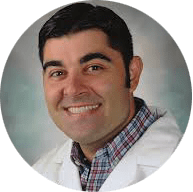Brugada Syndrome is an abnormal ECG (Right Bundle Branch Block Pattern with coved ST elevation over the right precordial leads of V1-V3), which leads to ventricular fibrillation (VF) and sudden cardiac death (SCD) in patients with structurally normal hearts. It has been recognized as a clinical entity since 1992. Why should all ED physicians know about this entity? Although a rare syndrome, it is often mistaken as a STEMI and more importantly the clinical spectrum can be asymptomatic to SCD.
Who gets Brugada Syndrome?
- Males > Females in a 8 – 10: 1 ratio
- Ages 20 – 40 years (There are case reports of age 2 days all the way up to 84 years)
- Asian > US populations
- Typically occurs at night, when there is a predominance of vagal activity
How common is Brugada Syndrome?
- Worldwide 4 – 12% of all sudden deaths
- Type 1 Brugada occurs in 12/10,000 people 1
- Type 2 and 3 Brugada occurs in 58/10,000 people 1
- Prevalance of Brugada Pattern ECG: Asia (0.36%), Europe (0.25%), and in the USA (0.03%) 2
- ECG pattern can wax and wane, making the true incidence underestimated
What are the types of Brugada Syndrome?
- Type 1, Type 2, and Type 3 from left to right, seen in leads V1, V2, or V3.



- Sodium channel defect that leads to impaired fast upstroke of phase 0 of the action potential
- See Paucis Verbis (PV) card on Brugada syndrome
Editor’s Note on 11/23/19: Brugada Type 3 is no longer considered a concerning morphology for Brugada Syndrome.
Where is the most likely arrhythmogenic substrate of Brugada Syndrome?
- Right Ventricular Outflow Tract (RVOT)
- Only cardiac structure lying underneath 2nd and 3rd intercostal spaces
- Brugada pattern may be absent in typical 4th intercostal space of leads V1 – V3
- Some drugs may induce VF/VT and a comprehensive list can be found at http://www.brugadadrugs.org
What is the best way to risk stratify patients with Brugada Syndrome?
- Symptomatic patients with recurrent syncope, agonal respirations at night during sleep, or unknown seizures are at the highest risk of dying
- Asymptomatic patients have an annual cardiac event rate of 0.25%, therefore there is little value in a risk stratification strategy to identify high risk patients
What are the treatment options for Brugada Syndrome?
- Quinidine is the only medication that has shown benefit in prevention of VF and reduction of AICD shocks (Only 67% of patients can tolerate drug due to side effects)
- Implantable Cardiac Defibrillator (ICD): Class 1 Indication in symptomatic patients (past history of VT/VF or syncope)
- Defibrillator Versus B-Blocker in Unexplained Death in Thailand (DEBUT) Trial: Showed 0% death rate after ICD versus 18% in Beta Blocker group 3
- Leadless ICDs: 98% termination rate of VF/VT, but less pocket infection and lead revisions 2
- Catheter Ablation: Performed in 14 patients with no recurrent VF/VT with a median 32 month follow up 4
Take home point
Brugada Syndrome is an uncommon entity, that can mimic STEMI, has a high rate of sudden cardiac death, and currently ICD placement is the best treatment strategy.
Reference
-
1.Miyasaka Y, Tsuji H, Yamada K, et al. Prevalence and mortality of the Brugada-type electrocardiogram in one city in Japan. J Am Coll Cardiol. 2001;38(3):771-774. [PubMed]
-
2.Mizusawa Y, Wilde A. Brugada syndrome. Circ Arrhythm Electrophysiol. 2012;5(3):606-616. [PubMed]
-
3.Nademanee K, Veerakul G, Mower M, et al. Defibrillator Versus beta-Blockers for Unexplained Death in Thailand (DEBUT): a randomized clinical trial. Circulation. 2003;107(17):2221-2226. [PubMed]
-
4.Zügner R, Tranberg R, Herberts P, Romanus B, Kärrholm J. Stable fixation but unpredictable bone remodelling around the Lord stem: minimum 23-year follow-up of 66 total hip arthroplasties. J Arthroplasty. 2013;28(4):644-649. [PubMed]
Author information
The post Brugada Syndrome: An ECG Pattern You Need to Know appeared first on ALiEM.



